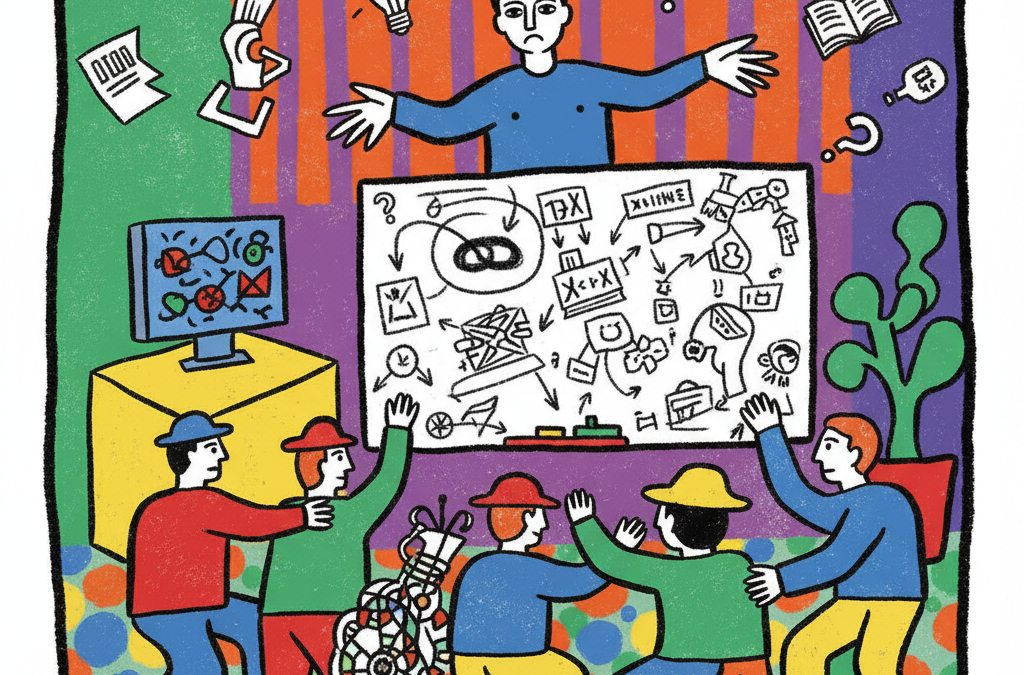We throw the word “training” around like it’s a magic fix.
Sales teams underperform? “They need more training.”
Managers struggle with feedback? “Send them to a training.”
New technology rollout flops? “Let’s run a training session.”
It’s the corporate equivalent of duct tape – a one-word solution for every performance gap.
But here’s the problem: most “training” doesn’t train anything.
And that’s why I hate the word.
“Training” sounds mechanical — but people aren’t machines
The word training comes from industrial roots — think soldiers, horses, or machines. It implies a one-way process: Someone teaches, someone else complies.
That mindset assumes performance is about input and repetition:
“Do X the same way enough times, and you’ll get result Y.”
But human performance doesn’t work that way. We’re not programmable.
We’re complex, emotional, contextual beings. We don’t just absorb – we interpret, resist, forget, adapt.
So when leaders treat “training” as a quick injection of knowledge rather than a long-term process of development, they get compliance – not competence.
The illusion of learning
A bad training session can actually make performance worse.
Why? Because it gives everyone a false sense of improvement.
People walk out thinking they’ve “learned” – but without practice, feedback, or reinforcement, the knowledge decays in days.
Managers tick a box (“we did the training”), while behavior on the ground barely shifts.
It’s like giving someone a gym membership and assuming they’ll get fit just by showing up once.
Real learning happens after the session — in how people apply, reflect, and receive feedback in real contexts.
What bad “training” really does
When we default to quick, one-size-fits-all “training,” we’re not just wasting time — we’re actively creating underperformance:
- It signals low trust: Employees feel like management doesn’t believe in their capability or judgment.
- It kills motivation: Scripted workshops often feel patronizing, especially for experienced professionals.
- It neglects the system: Performance issues often stem from structure, incentives, culture – not skill gaps.
- It treats knowledge as the goal, not behaviour change.
The outcome? A workforce that knows what to do but doesn’t do it – the classic knowing–doing gap.
So what works instead?
If we ditch the “training” mindset and replace it with development, everything changes:
- Design for context, not content.
Don’t teach “leadership” – build experiences that challenge people to practice leadership in their real work. - Shift from events to ecosystems.
One workshop won’t change culture. Build continuous learning loops: Coaching, peer reflection, on-the-job feedback. - Focus on application, not attendance.
Measure what changes – not who showed up. - Invest in psychological safety.
People only grow when they can admit what they don’t know. Safe teams outperform “trained” teams every time.
The paradox
When you stop trying to “train” people and start enabling them to learn – that’s when performance soars.
Because performance isn’t about control – it’s about conditions.
When the environment supports learning, people improve naturally.
Final thought
So yes, I hate the word “training.”
Not because it’s wrong – but because it’s too small for what people are capable of.
What teams need isn’t more training.
They need development, coaching, feedback, and real-world challenge.
That’s how you turn performance problems into growth stories.

